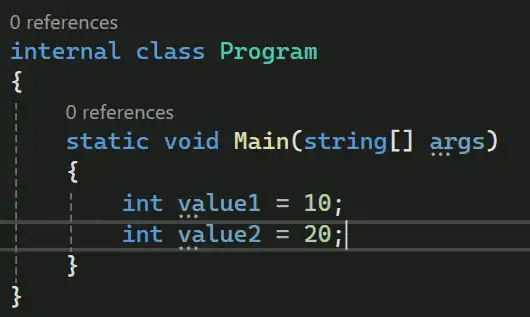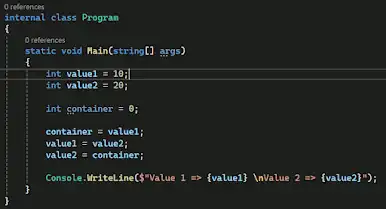In this blog post, we’ll dive into the basics of swap two numbers programs, a common question in technical interviews aimed at assessing fundamental logical thinking.
We’ll start by exploring the classic approach of swapping two values using a third temporary variable. While this may seem simple, it forms the cornerstone of logical problem-solving. As we progress through this post, we’ll delve into other methods of swapping values, but our primary focus will remain on grasping the fundamental logic behind these operations. what to understand star pattern , pyramid pattern ? check out Pyramid and Pattern programs page.
Table of Contents
By the end of this journey, you’ll be equipped to conquer swap programs and tackle more complex challenges with confidence. Let’s begin by mastering the essentials.
Let’s Begin Program to swap two numbers
The initial step you may need to take to begin solving this problem is two variables.

I’m employing `int` as the data type and creating two variables named `value1` and `value2`.Then, create a new temporary variable called “container”.

Now, assign “container” to “value1”, “value1” to “value2”, and “value2” to “container”.

Now, display “value1” and “value2”. You can observe that the values have been swapped.
internal class Program
{
static void Main(string[] args)
{
int value1 = 10;
int value2 = 20;
int container = 0;
container = value1;
value1 = value2;
value2 = container;
Console.WriteLine($"Value 1 => {value1} \nValue 2 => {value2}");
}
}